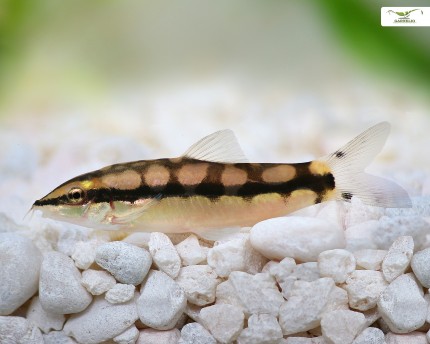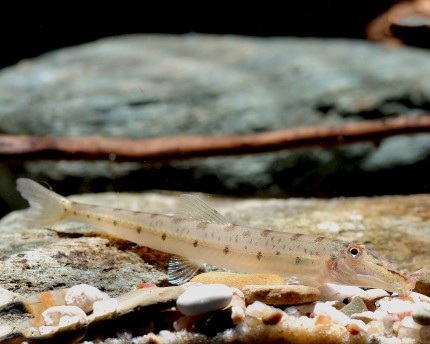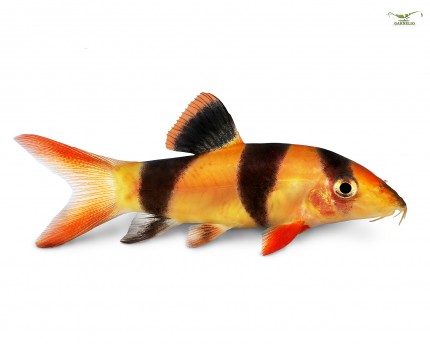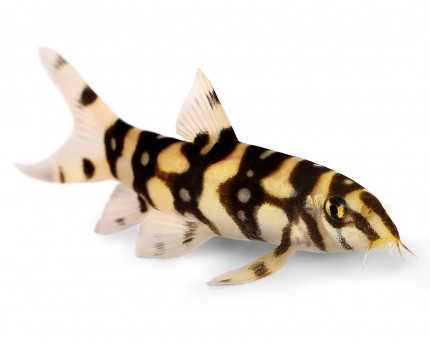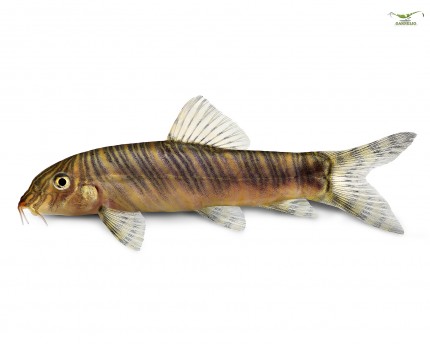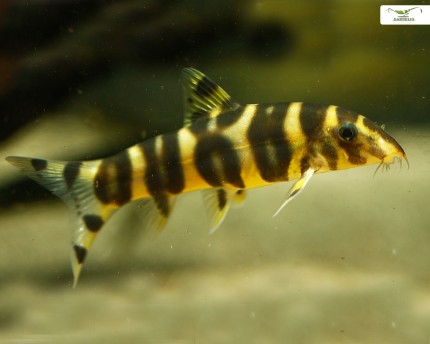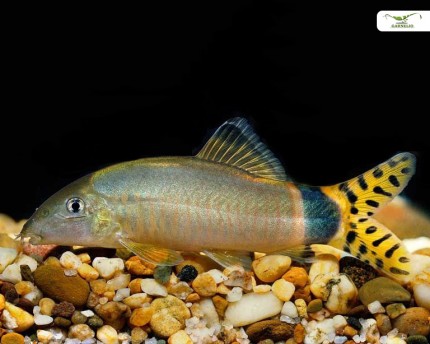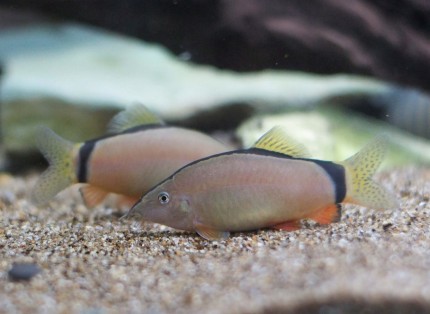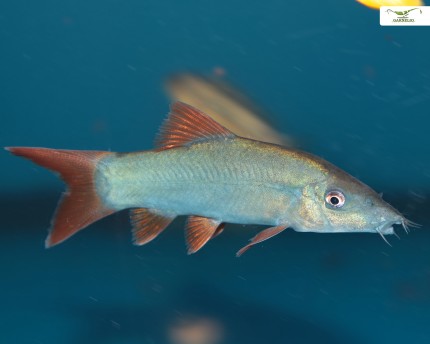Beauty loaches in nature
The family of Botiidae or the magnificent loaches is quite large. Their members live without exception in South Asia and East Asia, they can be found from India to Sumatra and Java to China and Japan. Magnificent loaches, like all loaches, have an under-eye spike that they raise when threatened - so please never pick up a loach in your hand, the pointed spike can cause nasty injuries. In addition, loaches have a barbelled sucking mouth on the underside of their head. This allows them to hold on to the site even in strong currents. Giant loaches can communicate by making clicking sounds, which can even be heard outside the aquarium.
Loaches live in the lowest water zone near the bottom. They are often found in larger, current-rich rivers with oxygen-rich water and rather rocky or sandy bottoms and few aquatic plants. The water is usually soft to medium hard and contains a large number of humic substances. Like the other loaches, the loaches are intestinal breathers and for this reason must always have free access to the water surface.
Behavior of clown loaches in the aquarium
Clown loaches ofthe species Botia macracantha can become very rough to conspecifics or even to other fish if kept incorrectly. They have hard earned the reputation of a small aquarium terrorist. However, it only materializes if too few clown loaches are kept, the aquarium does not have enough structure or is generally too small. Like the Magnificent Loach, the Botia macracantha must be kept in a sufficiently large group in an aquarium of 450 liters or more, in which it can live out its social behavior with other loaches of its own species, so that its fellow fish are not affected. The single keeping of clown loaches is unfortunately widespread, but definitely not species-appropriate. It can lead to severe behavioral disorders and aggression against the rest of the aquarium inhabitants. If loaches are kept in a large enough group of at least 6, these ornamental fish will establish a pecking order among themselves and will no longer become aggressive towards the other fish.
The checkerboard loach already fits into an aquarium from 100 liters, the emperor loach and the zebra loach need 200 liters, while both the reticulated loach and the red-finned lo ach should be placed in an aquarium from 250 or 300 liters. These loaches also always need the security of a group of at least 6 conspecifics.
Loaches in the aquarium
Loaches also like a certain current in the aquarium, they are optimal fish for a correspondingly large stream aquarium or flow aquarium. Oxygen-rich, humic water is mandatory! With their underslung mouths, loaches like to burrow for food in sand or fine, rounded gravel. Most loaches prefer rather warm, soft to medium hard water, some species can also be kept in hard water. Please pay attention to the information on water values in our item descriptions in the online store.
A good structuring in the aquarium also helps to keep the intra-species aggression lower. The loaches do not only need stones and aquarium roots, but also like to retreat into caves of suitable size. Loaches sometimes jump, so they should not be kept in open tanks.
Breeding loaches in the aquarium
Breeding magnificent loaches in the aquarium is usually not possible. There are rare reports of accidental breeding. In breeding farms in Asia, clown loaches of the species Botia macracantha are bred by means of a hormone treatment - in the aquarium at home, however, this is not possible and also not advisable.
Socialization of clown loaches
If kept in a large enough group in a large enough aquarium, magnificent loaches are well compatible with keeping in a community aquarium. Since they are snail eaters, they should not be kept in the aquarium with ornamental decorative snails. Dwarf shrimp and dwarf crayfish are also considered tasty food. With their very lively nature, loaches can subdue more reserved fish. Please refer to the individual item descriptions in our online store, there you will find detailed information on the socialization of the individual loach species. For large crayfish and also for aquarium crabs, smaller bottom-dwelling loaches represent a welcome prey.
Feeding loaches correctly
Loaches are omnivores and can be fed with NatureHolic Welstabs, but as snail eaters they also like to eat snails as well as live snails and other live food of suitable size. In addition to the above foods, we also particularly recommend our NatureHolic Main Feed Granules as a sinking staple food.
Conclusion
Unfortunately, loaches are often wrongly kept ornamental fish, which turn out to be great aquarium fish when kept correctly. They are fascinating to watch and have a very interesting social behavior. Their beautiful colors and contrasting patterns make them almost too good to be used as a functional fish and reduced to being snail eaters. In Garnelio's online store, you can buy vital Magnificent Loaches for your aquarium.

